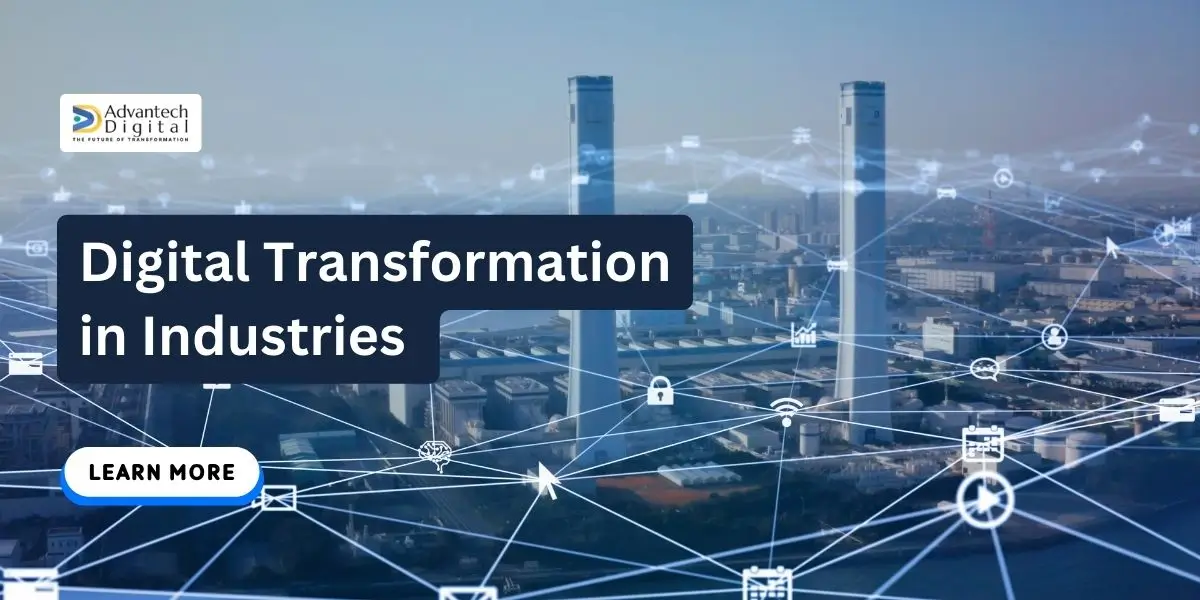IT companies can’t ignore digital transformation in IT in today’s fast-changing business world. Consumer expectations are shifting, and digital technology is advancing rapidly. Embracing change is now crucial for survival and growth in the IT industry.
Digital Transformation reshapes how IT businesses operate and serve customers. It uses cutting-edge tools like data analytics, cloud computing, and AI. These technologies help optimize processes and enhance customer experiences.
The impact on the IT sector is clear. Studies show a 32% increase in efficiency due to automation. 85% of IT businesses now use cloud computing. 71% have cut costs by up to 20% through process optimization.
Digital transformation has made IT companies more customer focused. 68% report better customer satisfaction through personalized experiences. Data-driven decisions have boosted revenue by 30% for 79% of IT organizations.
Agile Methodologies and digital tech give IT firms a competitive edge. 63% credit their success to digital transformation efforts. Companies that prioritize this change will thrive in the digital age.
Success requires clear goals, the right tech, and engaged stakeholders. Embracing change is now essential for future success in the IT industry.
Key Takeaways
Digital transformation integrates technology into IT businesses to optimize processes and drive growth.
IT companies gain efficiency, cut costs, and improve customer satisfaction through digital initiatives.
Data-driven decisions and agile methods increase revenue and competitive advantages for IT firms.
Embracing change is crucial for IT companies to unlock growth and thrive.
Successful transformation needs clear goals, the right tech, and engaged stakeholders.
What is Digital Transformation in IT?
Digital transformation integrates technology into all business aspects. It changes how companies operate and provide value to customers. In IT, it drives growth, efficiency, and innovation. Embarking on a digital transformation journey involves integrating technology into all business aspects to drive growth, efficiency, and innovation.
Successful digital transformation is challenging. Only 8% of global companies achieve their targeted business objectives. This highlights the need for a clear definition and understanding.
Defining Digital Transformation
Digital transformation integrates technology into all business areas. It leads to fundamental changes in operations and value delivery. It’s an ongoing process to improve end-user experiences. Utilizing digital transformation frameworks can guide organizations in navigating the complexities of this ongoing process.
This improvement comes through enhanced training, cloud migration, and artificial intelligence use. The MIT Sloan Management Review supports this definition.
Key Components of Digital Transformation
To ensure success, organizations must focus on several key components and effective business strategies:
Technology integration: Adopting and integrating digital technologies such as cloud computing, artificial intelligence, and automation to optimize processes and enhance capabilities.
Process optimization: Streamlining and automating processes to improve efficiency, reduce costs, and enhance agility.
Customer-centricity: Placing the customer at the center of all digital transformation efforts, focusing on improving their experience and engagement.
Data-driven decision making: Leveraging data analytics and insights to inform strategic decisions and drive continuous improvement.
Importance in the IT Sector
The IT sector enables digital transformation across industries. IT companies provide tools, platforms, and expertise to help businesses embrace change.
Here are some examples of digital transformation in various industries:
Industry | Digital Transformation Example |
|---|---|
Healthcare | Brigham Health uses virtual visits for patient appointments, showing a shift towards telemedicine to improve patient access and care. |
Hospitality | The industry is adopting online check-ins and amenity booking tools to streamline guest experiences and operational efficiencies, as seen with properties like Harrah’s. |
Retail | Target leverages loyalty cards, e-commerce stores, and mobile apps to enhance customer engagement and introduce variable pricing structures. |
The IT sector drives digital transformation. It must innovate and adapt to emerging technologies. This helps meet evolving business needs across industries.
The Driving Forces Behind Digital Transformation
Several key factors are propelling digital transformation in IT. These include tech advancements, market demand, consumer behavior, and regulatory changes. They’re reshaping the industry and pushing businesses to adapt and innovate. Leveraging technology is essential for businesses to adapt and innovate in response to these driving forces.
Technological Advancements
Tech advancements are a primary catalyst for digital transformation. Cloud and mobile computing, data analytics, and information security have opened new growth avenues. These technologies have enabled mobile-first strategies, SaaS models, and social media integration.
AI is rapidly emerging as a priority in digital transformation. Gartner predicts 75% of enterprise software engineers will use AI coding assistants by 2028. AI-driven components are revolutionizing the IT landscape.
Market Demand & Consumer Behavior
Evolving market demand and consumer behavior drive digital transformation. Customers want personalized experiences across various channels. They seek smarter products for better customer experiences or to address their own digital challenges.
Digital literacy has expanded digital channels for sales and services. It has enriched collaboration and innovation in IT. Born-digital companies now dominate platform business models.
Emerging Economy | Characteristics | Examples |
|---|---|---|
Social Networks | Benefit from the network effect, enhancing the value of the entire network as it grows | Facebook, LinkedIn |
Peer-to-Peer (P2P) | Empower users to control the value generated within the network | P2P lending networks, currency transfer/payment platforms |
Blockchains | Eliminate centralized oversight in transactions, providing a decentralized ledger system | Bitcoin, Ethereum |
Regulatory Changes
Regulatory changes drive digital transformation. New laws and standards push organizations to reassess their strategies. These changes often focus on data privacy, cybersecurity, and digital governance.
“Strategy, rather than technology, is the key driver in creating digitally transformed companies.” – Deloitte survey
The Internet’s success is linked to Moore’s Law and Metcalfe’s Law. Businesses must adapt to non-linear tech changes. By embracing these forces, IT companies can unlock new growth opportunities.
Digital transformation isn’t just about technology. It’s about using these forces to create value and drive innovation. Companies can enhance customer experiences and stay competitive in the digital age.
Key Trends in Digital Transformation
Digital transformation trends are constantly evolving, reshaping the landscape of the IT industry. Among the most influential trends are the adoption of cloud technology, artificial intelligence (AI), machine learning, and the Internet of Things (IoT). These technologies are revolutionizing how businesses operate, enabling them to automate processes, enhance customer experiences, and make data-driven decisions.
Augmented Reality (AR) & Virtual Reality (VR)
One of the most significant trends is the increasing use of augmented reality (AR) and virtual reality (VR). These technologies are transforming customer experiences by providing immersive and interactive environments. For instance, AR and VR are being used in retail to create virtual showrooms, allowing customers to explore products in a 3D space from the comfort of their homes.
Blockchain Technology
Blockchain technology is also gaining traction in digital transformation initiatives. Its ability to provide secure, transparent, and tamper-proof transactions is revolutionizing industries such as finance, supply chain, and healthcare. By leveraging blockchain, businesses can enhance security, reduce fraud, and improve traceability.
Digital Twins
Another emerging trend is the use of digital twins. These are digital replicas of physical systems, processes, or products that allow businesses to simulate changes, predict outcomes, and optimize processes without risking real-world consequences. For example, in manufacturing, digital twins can be used to simulate production processes, identify bottlenecks, and improve efficiency.
5G
The advent of 5G technology is expected to play a pivotal role in digital transformation. With its faster data transmission and lower latency, 5G will enable real-time data processing and support the proliferation of IoT devices. This will open up new possibilities for smart cities, autonomous vehicles, and advanced healthcare solutions.
As these digital transformation trends continue to evolve, businesses must stay abreast of the latest developments and leverage these technologies to drive innovation and growth. By embracing these trends, organizations can enhance their digital transformation initiatives and stay competitive in a rapidly changing business landscape.
Benefits of Digital Transformation in IT
Digital transformation is key to success in IT. It boosts efficiency, improves customer experience, and creates new revenue streams. Companies can thrive by embracing digital technologies and strategies. A well-defined digital transformation strategy is crucial for realizing these benefits and driving growth in the IT sector.
Enhanced Operational Efficiency
Digital transformation greatly improves operational efficiency in IT. It automates tasks, streamlines processes, and removes bottlenecks. IBM showed bots can complete tasks 20 times faster than humans.
Digital tools in design and engineering support sustainable practices. They reduce material and energy use, lower emissions, and minimize waste. This optimizes resources, cuts costs, and helps the environment.
Improved Customer Experience
Delivering exceptional customer experience is crucial in today’s competitive market. Digital transformation uses data-driven insights to enhance customer satisfaction and loyalty. Companies can tailor offerings by integrating apps into a central business intelligence system.
Better customer experience significantly impacts business growth. A single point increase in CX scores can lead to millions in annual growth. This highlights the importance of customer-focused digital transformation in IT.
Benefit | Impact |
|---|---|
Increased profits | 80% of organizations report increased profits after digital transformation |
Market share growth | 85% of companies have seen an increase in market share |
Revenue growth | Leaders in digital transformation experience 23% higher revenue growth than competitors |
New Revenue Streams
Digital transformation creates new ways to generate revenue in IT. Cloud computing, AI, and machine learning enable innovative products and services. This diversifies income and positions companies as industry leaders.
Digital transformation is not just about technology; it’s about reimagining business models, processes, and customer experiences to drive growth and stay ahead of the competition.
The digital transformation market in IT is growing rapidly. It’s expected to reach $1.275 trillion by 2026, up from $521.5 billion in 2021. This growth shows the importance of digital transformation for competitive advantage.
Challenges in Adopting Digital Transformation
Digital transformation offers many benefits, but organizations face significant challenges. These obstacles can hinder successful adoption of digital initiatives. Let’s explore key challenges businesses encounter in digital transformation. Digital transformation projects often face challenges such as resistance to change, skills gaps, and cybersecurity concerns.
Resistance to Change
Resistance to change is a major digital transformation challenge. Employees often resist new tools and processes, preferring familiar methods. In fact, 70% of digital transformation programs fail due to employee resistance.
Effective change management and clear communication about benefits are crucial. Organizations with strong change management strategies are six times more likely to succeed in digital transformation.
Skills Gap in the Workforce
The skills gap poses another significant challenge. Many organizations struggle to find employees with necessary digital skills. 54% of organizations can’t achieve digital transformation goals due to lack of skilled employees.
Businesses need to invest in training and upskilling programs. Collaborating with educational institutions can help develop digitally proficient talent.
Cybersecurity Concerns
As organizations embrace digital technologies, cybersecurity concerns become critical. The risk of cyber-attacks and data breaches rises with increased reliance on digital systems. Robust cybersecurity measures are essential to maintain customer trust.
A 2021 IBM study found 60% of CIOs and CTOs feel unprepared for future IT challenges. This highlights the need to prioritize cybersecurity and invest in advanced security solutions.
Addressing these challenges requires a strategic approach. Foster innovation, invest in employee training, and prioritize cybersecurity. This will help organizations unlock the full potential of digital transformation.
Strategies for Successful Digital Transformation
Digital transformation can be complex for IT organizations. A well-defined business strategy is crucial for success. This includes clear objectives, the right technologies, and engaging stakeholders.
Only 35% of organizations’ digital transformation strategies succeed. To boost success, set measurable KPIs and ensure buy-in from all levels. Rick Kelley stresses aligning stakeholders before starting the transformation.
Setting Clear Objectives
Set clear objectives aligned with overall business goals. Focus on enhancing customer experience, improving efficiency, and driving innovation. Consider factors like customer experience, business resilience, and employee performance.
Choosing the Right Technologies
Selecting appropriate technologies is vital for digital transformation. Assess your current tech stack and identify areas needing upgrades. Key technologies include cloud computing, AI, and the internet of things (IoT).
Choose technologies that boost efficiency, improve customer experience, and enable innovation.
“Digital transformations involve significant changes, such as technology stack upgrades and process improvements, necessitating a comprehensive risk management analysis in the strategy.” – Digital Transformation Expert
Engaging Stakeholders
Successful transformation requires support from all stakeholders. This includes executives, change leaders, implementation teams, and customer experience staff. Change leaders play a crucial role in driving the initiative.
Involve customer experience teams to define needs and ensure technologies enhance customer satisfaction. Develop strategies for continuous learning and improvement. Stay ahead of technology trends to maintain a competitive edge. Remember, digital transformation is an ongoing process.
The Role of Culture in Digital Transformation
Culture plays a crucial role in digital transformation, acting as either a catalyst or a barrier to success. A culture that embraces change, innovation, and experimentation is essential for successful digital transformation initiatives. Business leaders must foster an environment that encourages collaboration, creativity, and continuous learning, while also being willing to take calculated risks to drive innovation.
Digital transformation requires more than just adopting new technologies; it necessitates a fundamental shift in mindset. This shift emphasizes customer-centricity, agility, and adaptability. Business leaders must lead by example, demonstrating a commitment to digital transformation and empowering their teams to drive change. By doing so, they can create a culture that is open to new ideas and approaches.
A culture of digital transformation also requires a focus on employee engagement and development. Business leaders must invest in training and development programs that help employees build the skills they need to succeed in a digital world. This includes providing opportunities for employees to learn new technologies, develop new skills, and take on new challenges. For instance, offering workshops on AI and machine learning can equip employees with the knowledge to leverage these technologies in their roles.
Moreover, fostering a culture of digital transformation involves creating an environment where employees feel valued and motivated. Recognizing and rewarding innovation and continuous improvement can inspire employees to contribute to the organization’s digital transformation efforts. Encouraging cross-functional collaboration can also break down silos and promote a more integrated approach to digital initiatives.
Ultimately, a culture of digital transformation is one that is customer-centric, agile, and adaptable, and that is committed to continuous learning and innovation. By fostering such a culture, business leaders can drive successful digital transformation and stay ahead of the competition in a rapidly changing business landscape. Embracing this cultural shift is key to unlocking the full potential of digital technologies and achieving long-term success.
The Role of Leadership in Digital Transformation
Leadership is crucial for successful digital transformation in organizations. CEOs define the vision, aligning it with long-term business goals. IT departments handle the implementation of necessary technologies. Digital transformation consultants offer valuable insights and expertise to support the process.
Effective leaders foster innovation by encouraging smart risks. They communicate transformation benefits clearly to build trust. A deep understanding of emerging tools helps them make informed decisions.
Vision & Strategy
Visionary leadership is key for digital transformation. Leaders need to understand new technologies, market trends, and customer expectations. They must create ambitious roadmaps and build quality digital talent.
Adopting cross-functional teams and modern software practices are crucial strategies. These approaches help organizations stay competitive in the digital age.
Cultivating a Digital Culture
Leaders shape organizational culture to promote change and adaptability. They foster learning, innovation, and risk-taking. Open communication and leading by example inspire teams to embrace digital initiatives.
“Leadership’s role in digital transformation is to create an environment that empowers teams to innovate, experiment, and continuously improve.” – Michael Schrage, MIT Sloan School of Management
Empowering Teams
Providing resources and training for digital skills is crucial. Collaboration and distributed leadership help navigate complex transformation processes. These approaches break down silos and leverage collective intelligence.
Leaders must measure and adjust strategies based on performance data. They should also consider feedback from stakeholders. This ensures organizations stay agile amid rapid technological advancements.
A people-centric approach and challenging the status quo drive successful digital transformation. These factors unlock the potential of AI and other technologies to revolutionize business processes.
Key Technologies Shaping Digital Transformation
Digital transformation in IT is driven by revolutionary technologies. These tools streamline processes and enhance customer experiences. They also unlock new opportunities for growth and innovation.
Cloud Computing
Cloud computing is crucial for digital transformation. It offers scalable and cost-effective infrastructure. Organizations can quickly deploy digital solutions without large upfront investments.
Amazon Web Services (AWS) leads this trend. It was the first major Infrastructure-as-a-Service (IaaS) cloud computing service.
Artificial Intelligence
AI and machine learning transform data analysis and decision-making. They enable automated decisions, predictive analytics, and intelligent automation. These technologies optimize operations and deliver personalized customer experiences.
At Digital Transformation Week in Amsterdam, semantic layers were highlighted. They improve AI and data analytics, enabling better insights and decision-making.
Technology | Key Benefit |
|---|---|
Cloud Computing | Scalable and flexible infrastructure |
Artificial Intelligence | Automated decision-making and predictive analytics |
Internet of Things | Real-time data collection and analysis |
Data Analytics | Insights for optimizing operations and customer experiences |
Internet of Things (IoT)
IoT connects devices and collects real-time data. It enables remote monitoring, predictive maintenance, and optimized operations. By 2030, the EU aims for all citizens to access medical records online. The EU also plans for digital IDs. This highlights IoT’s growing importance in healthcare and digital services.
Other key technologies include big data, virtual reality, robotics, and blockchain. Real-time analytics also play a crucial role. Organizations must consider ethical implications, especially with AI.
The EU AI Act provides a regulatory framework. It addresses potential risks and ensures responsible use of these powerful tools.
Digital transformation is not just about technology. It’s about using technology to achieve business goals and create value for customers.
Successful digital transformation needs a well-defined Enterprise Architecture. This aligns technology solutions with long-term business objectives. Leadership is also critical.
Leaders must inspire teams and foster adaptability. They should empower high performance and create a culture of learning. With this approach, IT organizations can unlock digital transformation’s full potential.
Measuring the Impact of Digital Transformation
Measuring digital transformation impact is crucial in IT. Clear metrics help organizations make data-driven decisions. Tracking progress allows for continuous improvement of digital strategies.
Metrics to Track Success
Key performance indicators (KPIs) are vital for measuring digital transformation success. These metrics should align with organizational goals.
Cost reduction through automation and improved efficiencies
Revenue growth from new digital revenue streams
Efficiency gains in task completion times and productivity levels
Time-to-market improvements for new products and services
Employee engagement and satisfaction with digital tools
Customer satisfaction scores and Net Promoter Score (NPS)
Brand perception through social media sentiment and awareness surveys
Innovation levels, such as successful new product introductions
Tracking these success metrics provides a comprehensive view of digital transformation impact.
Continuous Improvement
Measuring digital transformation impact requires ongoing monitoring. Regular assessments help optimize digital initiatives. Data-driven decisions keep organizations ahead of the curve.
Consider these metrics for improvements:
Short-term Metrics | Long-term Metrics |
|---|---|
Process streamlining and error reduction | Sustained impact on strategic objectives |
Immediate cost savings from reduced labor and operational expenses | Competitive advantage in the market |
Initial productivity boosts in output per employee | Long-term revenue growth and profitability |
Case Studies & Success Stories
Real-world case studies and success stories powerfully demonstrate digital transformation impact. They inspire and guide transformation journeys.
A financial services company used cloud computing and AI for digital transformation. They cut costs by 30% and improved customer satisfaction by 25%. New digital products generated $50 million in first-year revenue.
Learning from success stories can accelerate digital transformation. Adapting best practices unlocks growth opportunities in IT.
Future Trends in Digital Transformation
Digital transformation in IT is shaping the future of business operations. Key trends like increased automation, sustainability focus, and personalization are driving innovation. These trends are set to fuel growth in coming years.
Gartner reports that 90% of organizations are involved in digital initiatives. This widespread adoption is expected to continue growing. Direct investment in digital transformation may reach USD 7 trillion by 2025.
Increased Automation
Automation is a key trend in digital transformation. Businesses are adopting these technologies to improve efficiency and streamline processes. The global market for hyper-automation technology could hit $596.6 billion by 2026.
This trend will reduce manual effort significantly. It will also allow organizations to focus on high-value tasks and strategic initiatives.
Focus on Sustainability
Sustainability is becoming a major driver of digital transformation. Consumers and stakeholders are demanding more environmentally friendly practices. Businesses are turning to digital solutions for energy efficiency and waste reduction.
Technologies like IoT and data analytics help monitor environmental impact. Organizations can use these tools to optimize their practices for a sustainable future.
Trend | Market Size | Growth Rate |
|---|---|---|
Predictive Analytics | USD 38,038.83 million by 2028 | CAGR of 20.4% (2022-2028) |
Generative AI Models | Rising demand across industries | Rapid adoption |
AI Microservices | Aiding in IT operations | Facilitating innovation and speeding up time-to-market |
Expanding Personalization
Personalization now extends beyond customer experiences. It includes employee experiences and tailored solutions. AI and machine learning help deliver highly personalized experiences.
This trend enhances customer satisfaction and boosts employee engagement. It also improves productivity across organizations.
Seamless customer experience is identified as the most important factor for business performance.
Embracing these trends is crucial for organizations to stay competitive. Adopting agile methodologies helps businesses stay ahead of the curve. This approach unlocks new opportunities for growth and innovation in the digital age.
Conclusion: Embracing Change for Future Success
Embracing change is crucial for success in the IT industry. Digital technologies can drive growth and innovation in evolving markets. They stress the importance of valuing change, collaboration, and continuous learning.
Recap of Digital Transformation Benefits
Digital transformation offers numerous benefits to the IT sector. It enhances efficiency, improves customer experiences, and creates new revenue streams. Gartner reports that 56% of CEOs saw increased revenue from digital enhancements.
Encouraging Ongoing Transformation Efforts
Advantech Digital notes that digital transformation is an ongoing journey. Organizations must foster continuous improvement to stay ahead in the digital age.
IDC predicts that by 2025, 70% of organizations will accelerate their use of digital technologies. This will transform business processes and drive customer engagement, employee productivity, and business resiliency.
Final Thoughts on Growth & Innovation
Growth and innovation in IT are tied to successful digital transformation strategies. Key technologies like cloud computing, AI, and IoT can unlock unprecedented opportunities.
The digital transformation market is projected to reach $1.27 trillion by 2026. Embracing change and nurturing a digital culture will determine the winners of the digital age.
FAQ
What is digital transformation in the IT industry?
Digital transformation in IT integrates technology into all business areas. It changes how companies operate and provide value to customers. This process uses cloud computing, artificial intelligence, machine learning, data analytics, and automation. These tools help optimize processes and improve customer experiences. They also drive growth and innovation in IT businesses.
What are the key components of digital transformation?
Digital transformation includes technology integration, process optimization, and customer-focused strategies. It also relies on data-driven decision making. Companies adopt agile methodologies and use cloud computing for scalability. They utilize data analytics for insights and implement automation to streamline operations. These components work together to create a comprehensive transformation.
What factors drive digital transformation in the IT industry?
Customer expectations, technological advancements, and market disruption drive digital transformation. Regulatory requirements and talent retention also play crucial roles. The rise of artificial intelligence, blockchain, and internet of things accelerates this change.
What are the benefits of digital transformation for IT businesses?
Digital transformation increases efficiency and enhances customer experiences. It gives businesses a competitive edge and improves agility. Cloud computing, data analytics, and automation help streamline processes. These technologies also improve decision-making and allow for personalized customer experiences. Cost optimization is another significant benefit of digital transformation.
What are the challenges in implementing digital transformation?
Digital transformation faces challenges like cultural resistance and outdated systems. Data security, privacy concerns, and talent gaps also pose difficulties. Ensuring cybersecurity and acquiring skills in artificial intelligence and machine learning can be hurdles. Overcoming resistance to change is a significant challenge for many IT businesses. Scalability issues may also arise during implementation.
What role does leadership play in digital transformation?
Leadership is crucial in driving successful digital transformation. Leaders must create a clear vision and align digital initiatives with business goals. They should communicate the importance of transformation across the organization. Effective leaders foster a culture of innovation and continuous learning. They empower teams to take ownership of digital initiatives.
What are the key technologies shaping digital transformation in IT?
Key technologies include cloud computing, artificial intelligence, and machine learning. Internet of things (IoT), data analytics, automation, and blockchain also play vital roles. These technologies enable scalability and intelligent decision-making. They also allow for real-time data collection and streamlined processes.
How can IT businesses measure the impact of digital transformation?
IT businesses should establish key performance indicators (KPIs) aligned with transformation goals. They should monitor and adjust digital initiatives based on data-driven insights. Tracking progress and demonstrating ROI are crucial steps. Case studies and success stories can showcase real-world examples. These help measure the impact of digital transformation efforts.
















1 thought on “Unlock Growth Impact: Digital Transformation in IT Industry!”
Comments are closed.